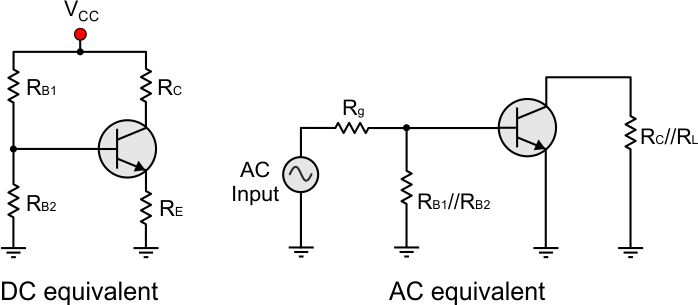What I understand is: in discrete amplifier circuits, the aim of the DC analysis is to find the DC operating point. (I get this part)
And the texts I read so far mentions that AC analysis is done to obtain the Voltage gain, input and output impedance, and frequency response.
My confusion is that: why do we need AC analysis but not DC analysis to find the input and output impedance? Why do we ignore the DC part of an input signal when finding input or output impedance?
Is there a way to clarify/understand this in a simple fashion? Would be nice to consider a BJT common emitter amplifier with a resistor at its emitter such as:


